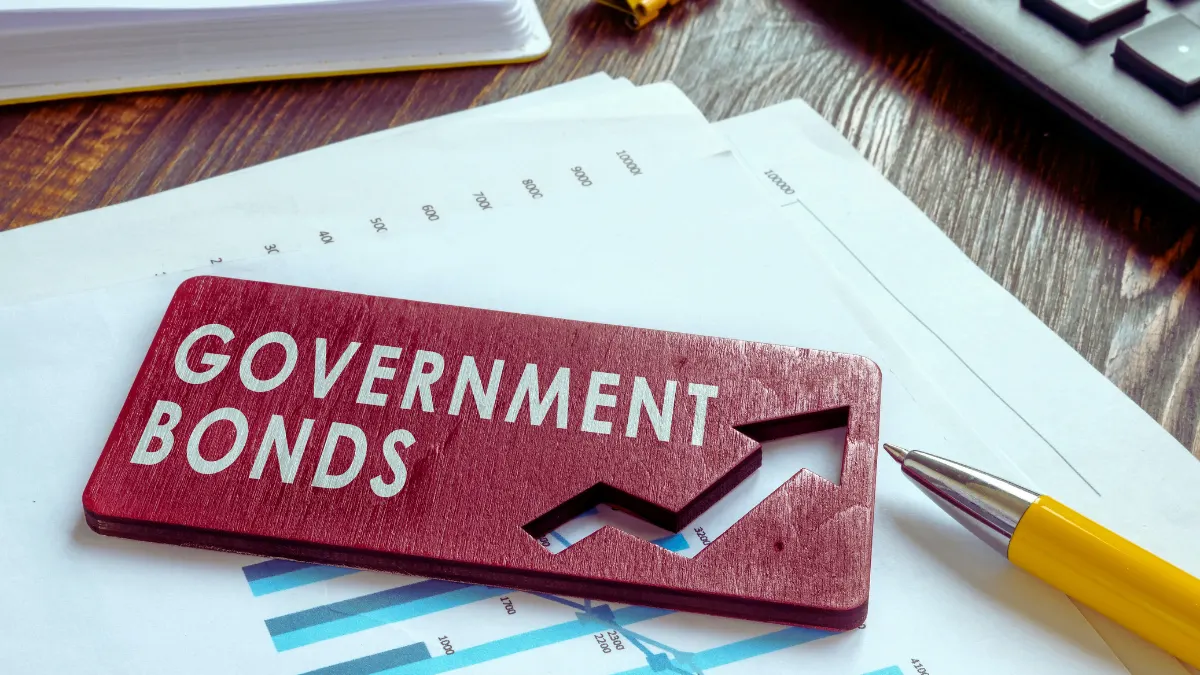Your $100 grocery bill from 2020 now costs $130. And it’s not stopping there.
You watch your savings account lose buying power every month. The bank pays you 0.5% interest while prices go up 3% or more. Your money is getting weaker, and you feel helpless to stop it.
Most financial advice about inflation hedging sounds like it’s written for millionaires. Complex strategies. Expensive minimums. Words you need a finance degree to understand.
Here’s the truth: You don’t need to be rich or smart about money to protect what you’ve saved. This guide shows you seven simple ways to fight inflation. Ways that work for people with regular jobs and normal bank accounts.
You’ll learn what inflation hedging means. You’ll see exactly how to buy investments that go up when prices go up. And you’ll get a simple plan to protect your money starting this month.
What Is Inflation Hedging and Why You Need It Right Now?

Inflation hedging means buying things that hold their value when prices rise. Think of it as insurance for your money.
Here’s how inflation steals from you. Let’s say you have $10,000 in a savings account. Inflation runs at 3% per year. Your bank pays 0.5% interest. After one year, your $10,050 buys what $9,700 bought before. You lost $300 of buying power.
Over 10 years, that $10,000 only buys what $7,400 bought when you started. That’s a 26% loss in what your money can buy.
This is why people call inflation a “stealth tax.” It takes your wealth without you seeing it happen.
Regular savings accounts can’t protect you. Neither can most bonds when inflation gets high. You need investments that rise with prices.
The Federal Reserve targets 2% inflation per year. But inflation has averaged 3.2% over the past 20 years. And recently, it hit levels not seen since the 1980s.
Your purchasing power is under attack. But you can fight back with the right strategy.
Simple Ways to Protect Your Purchasing Power
You have five proven strategies to fight inflation. Each one works differently, but they all help your money keep up with rising prices. Start with one that fits your comfort level and budget.
1. Treasury Inflation-Protected Securities (TIPS): Your Inflation Safety Net

The U.S. government offers one guaranteed way to beat inflation. They’re called Treasury Inflation-Protected Securities, or TIPS.
TIPS work like this: The government adjusts the value of your investment based on inflation. If prices go up 3%, your TIPS investment goes up 3%. Plus, you get a small interest payment on top.
According to a 2023 study from Dimensional, TIPS outperformed inflation in 69% of rolling one-year periods between 2001 and 2022, preserving purchasing power in real terms.
You can buy TIPS in three ways:
- Direct from the government. Go to TreasuryDirect.gov. Open an account for free. Buy TIPS when they auction new ones. You need at least $100 to start.
- Through your broker. Most big brokers like Fidelity, Schwab, and Vanguard sell TIPS. You can buy individual TIPS or funds that hold many TIPS together.
- TIPS ETFs. These are like mutual funds that trade on the stock market. Popular ones include SCHP and TIPX. You can buy shares for around $50 each.
Here’s what happened to a $10,000 TIPS investment during the 2021-2022 inflation surge. While regular bonds lost money, TIPS gained about 8% because they adjusted for rising prices.
TIPS aren’t perfect. They don’t pay much when inflation is low. And you owe taxes on the inflation adjustments each year, even though you don’t get that money until you sell.
But TIPS give you something precious: a guarantee that inflation won’t destroy your money. They’re the closest thing to inflation insurance you can buy.
2. Real Estate: The Classic Inflation Fighter That Actually Works

Your rent goes up every year. Now you can profit from that trend instead of just paying for it.
Real estate has beaten inflation for decades. Here’s why: When prices rise, landlords charge more rent. Property values go up, too. Real estate gives you two ways to profit from inflation.
Most people think they need $50,000 or more to invest in real estate. Not true. You have easier options:
- REITs (Real Estate Investment Trusts). These companies own apartment buildings, shopping centers, and office buildings. They pay you dividends from the rent they collect. You can buy REIT stocks for under $50.
- REIT ETFs. These funds own many different REITs. VNQ is a popular one that owns REITs across the whole U.S. real estate market.
- Fractional real estate platforms. Companies like Fundrise let you invest in real estate projects with just $500. You own a small piece of real property.
Here’s proof real estate works: During the high inflation of the 1970s & 1980s, real estate returned about 16.3% per year while inflation ran at 9.3%. Real estate won.
REITs have some downsides. They can drop in value like stocks. And they’re sensitive to interest rate changes. But over long periods, real estate has been one of the best inflation hedges you can buy.
Start with a broad REIT ETF if you’re new to real estate investing. It gives you exposure to thousands of properties without picking individual companies.
3. Commodities and Precious Metals: When Stuff Gets More Expensive

When inflation hits, the price of stuff goes up. Oil, wheat, gold, silver – these raw materials often rise faster than regular prices.
Commodities work as inflation hedges because they are inflation. When the cost of oil goes up, gas prices rise. When wheat costs more, bread gets expensive. By owning commodities, you profit from the same price increases that hurt you as a consumer.
You don’t need to store gold bars in your basement. Here are simple ways to invest:
- Commodity ETFs. DBC owns a mix of oil, metals, and agricultural products. PDBC is another broad option. You can buy shares like any stock.
- Precious metals ETFs. GLD tracks gold prices. SLV tracks silver. You get the price movement without dealing with storage or insurance.
- Physical metals. You can buy gold and silver coins from dealers like APMEX or JM Bullion. But you’ll pay extra for storage and insurance.
Gold did great during the 1970s inflation crisis. A $1,000 gold investment in 1970 was worth over $6,000 by 1980. Gold protected people when the dollar was losing value fast.
But commodities are volatile. Gold dropped 60% in the 1980s and 1990s when inflation stayed low. Silver swings up and down even more.
Keep commodities to 5-10% of your money at most. They’re insurance, not your main investment strategy.
4. Stocks That Get Stronger During Inflation

Not all stocks hate inflation. Some companies get stronger when prices rise.
The winners are companies that can raise their prices easily. They sell things people must buy regardless of cost. Think electric companies, food producers, and companies that pay growing dividends.
Dividend-growing stocks are inflation fighters. These companies have raised their dividends every year for 25+ years. They’re called Dividend Aristocrats. Companies like Coca-Cola, Johnson & Johnson, and Procter & Gamble.
When inflation hits, these companies raise prices on soap, soda, and medicine. People still buy these products. The companies make more money and pay bigger dividends.
Utility companies do well, too. Everyone needs electricity and water. When their costs go up, utility companies can usually raise rates to match. NextEra Energy and Dominion Energy are examples.
International stocks help because you’re not just betting on U.S. dollars. ETFs like VEA (developed countries) and VWO (emerging markets) give you exposure to foreign companies and currencies.
Value stocks tend to beat growth stocks during inflation. Value companies often make real products that get more expensive. Growth companies rely on cheap money to fund expansion, which gets harder when inflation rises.
You can buy these inflation-fighting stocks through any broker. Look for ETFs that focus on dividend growers, utilities, or value stocks if you don’t want to pick individual companies.
A 2024 Investopedia review and academic research confirm that value stocks, in particular, tend to do much better than “growth” stocks when inflation is running high.
5. I Bonds: The Government’s Gift to Regular Savers

I Bonds might be the best deal the government offers regular people. They’re savings bonds that adjust for inflation automatically.
Here’s how they work: Every six months, the government sets new I Bond rates based on inflation. When inflation runs at 6%, your I Bonds pay close to 6%. When inflation drops to 2%, your bonds pay close to 2%.
You’re guaranteed never to lose money. Even if deflation happens (prices go down), your I Bonds can’t go below zero.
The rules:
- You can buy up to $10,000 per person per year
- You must hold them for at least one year
- If you sell before five years, you lose three months of interest
- You buy them at TreasuryDirect.gov
During 2022, when inflation hit 9%, I Bonds paid over 9%. People with savings accounts earning 0.5% felt pretty stupid.
I Bonds have limits that make them less useful for big investors. But for regular people saving for emergencies or future goals, they’re almost perfect.
The tax benefits are good, too. You don’t owe state taxes on I Bond interest. And you can defer federal taxes until you cash them out.
If you’re not buying I Bonds, you’re missing free money from the government.
How to Build Your Inflation-Fighting Plan?

You don’t need all these strategies. Pick the ones that fit your situation and start simple.
Here’s a basic inflation-fighting portfolio for someone with $50,000 to invest:
Conservative approach:
- 50% stock index funds (broad market ETFs)
- 20% TIPS or TIPS ETFs
- 15% REIT ETFs
- 10% I Bonds (up to the $10,000 limit)
- 5% commodity ETFs
Moderate approach:
- 60% stocks (mix of U.S. and international)
- 15% TIPS
- 15% REITs
- 5% commodities
- 5% cash/I Bonds
- Your emergency fund needs special attention. Keep 3-6 months of expenses in I Bonds or high-yield savings accounts. Don’t invest emergency money in stocks or commodities.
- Dollar-cost averaging works great for inflation hedging. Invest the same amount every month regardless of what markets are doing. This smooths out the bumps and keeps you consistent.
- Rebalance once per year. If stocks go up a lot, sell some and buy more of the investments that didn’t rise as much. This forces you to buy low and sell high.
Start with one strategy this month. I Bonds are easiest for beginners. TIPS ETFs work well, too. Add other pieces over time as you get comfortable.
Mistakes That Will Cost You Money

Smart people make dumb mistakes with inflation hedging. Avoid these common errors:
- Putting all your money in gold. Precious metals are volatile. They can drop 50% or more during certain periods. Diversify across multiple strategies.
- Trying to time inflation. Nobody knows exactly when inflation will spike or fall. Consistent investing beats trying to guess market timing.
- Ignoring taxes. TIPS create taxable income even when you don’t sell them. Hold TIPS in retirement accounts when possible. Understand the tax implications before you invest.
- Panic buying during high inflation. When inflation hits the news, prices for inflation hedges often spike too. You end up buying high. Better to build your hedge gradually over time.
- Forgetting about deflation. Sometimes prices fall instead of rising. Japan went through decades of deflation. Pure inflation hedges can lose money during deflation. This is why you still need some regular stocks and bonds.
- Paying high fees. Some actively managed inflation funds charge 1% or more in annual fees. Stick with low-cost ETFs that charge 0.1-0.3% per year.
The biggest mistake is doing nothing. Inflation is guaranteed over long periods. Your purchasing power will decline if you don’t take action.
Your Next Steps: Start Protecting Your Money This Month

Inflation hedging isn’t complicated. You don’t need perfect timing or complex strategies. You just need to get started.
Pick one strategy from this guide and implement it this month. Open a TreasuryDirect account and buy $1,000 in I Bonds. Or buy shares of a TIPS ETF through your broker. Or add some REIT exposure to your portfolio.
Small steps beat perfect plans that never happen.
Remember: inflation hedging is insurance, not a get-rich scheme. These strategies protect your purchasing power over time. They won’t make you wealthy overnight, but they’ll keep inflation from making you poor.
Your future self will thank you for taking action today. Because while you can’t control inflation, you can control how it affects your money.
The inflation fight starts now. Your purchasing power depends on it.
